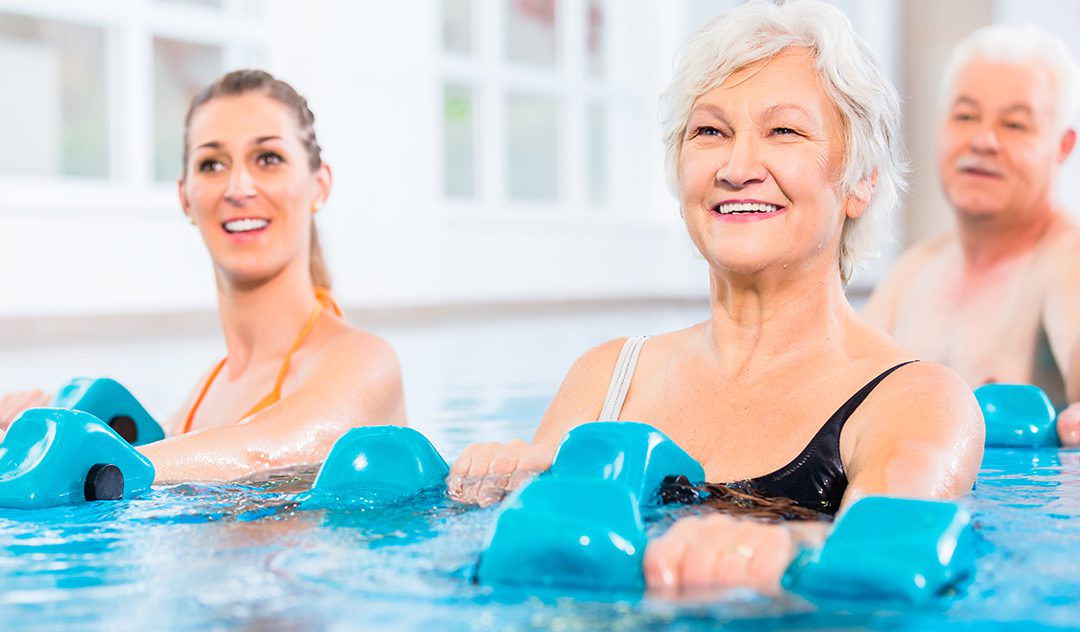While drinking plenty of water is critical to life, health and healing, simply submerging your body in water (i.e., a pool) opens up opportunities for relief and fitness for those who otherwise may have difficulty exercising.
This is especially important for aging adults and those with chronic conditions, say physical therapists and other health care professionals.
“When you do an exercise on land, like jogging, you get an impact on your joints,” said Torben Hersbork, an osteopath from the Central London Osteopathy and Sports Injury Clinic. “But, when you exercise in the water, you don’t have any gravity forcing your body weight down onto your joints.”
Because of this, experts say water exercise is ideal for people dealing with issues related to strength, flexibility, balance, sore joints and pain. This includes people recovering from injury or surgery, as well as those with chronic conditions like arthritis, osteoporosis and diabetes.
The buoyancy of waist-deep water, for example, can support around half our body weight, while neck-deep water can reduce body weight by up to 90 percent. Such reduction in weight and impact on the joints can help people who may experience difficulty standing, balancing and exercising on land to move more freely – and often with less pain.
In addition, water offers 12 times the resistance of the air around us. Because of this added resistance, movement and exercise while submerged in a pool can help build overall strength and stability in the body.
“If you are over 50, the American College of Sports Medicine recommends moderately intense aerobic exercise for 30 minutes a day, four times a week, plus resistance strength training, plus balance and flexibility training,” said Mary E. Sanders, a researcher at the University of Nevada (Reno). “A swimming pool provides the one place where you can do all of that at the same time without the need for a lot of machines – at your own pace and more comfortably.”
One study published in Medicine & Science in Sports & Exercise back in 2007 showed that older women who regularly participated in a pool-based exercise program performed better in daily tasks than others who exercised similarly on land. The women in the study, for example, improved their walking speed by 16 percent, their agility by 20 percent, and their ability to walk stairs by 22 percent.
Another study published earlier in the same publication (2002) showed that combining aqua aerobics with strength training while in the pool helped participants increase their strength by 27 percent in the quads, 40 percent in the hamstrings, and about 10 percent in the upper body.
Even when people suffer from common chronic diseases like arthritis and osteoporosis, water exercise can help improve the use of affected joints while decreasing overall pain.
“Exercise is an integral part of any arthritis treatment program, as it helps to strengthen and stabilize the joints, preventing further damage,” wrote Andrew Cole, M.D., an author on Arthritis-Health.com. “Water therapy is an excellent option for patients with osteoarthritis of the knees, hip osteoarthritis, and spinal osteoarthritis due to the decreased pressure placed on the joints.”
Those who feel pool exercise or aquatic therapy may help them improve fitness levels or overall functional abilities should first contact their physical therapist for professional guidance. A physical therapist can help identify your greatest weaknesses and needs, then develop a pool fitness plan that specifically addresses these needs and your personal goals.
